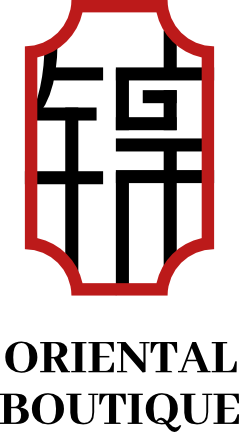Exploring the Timeless Fabrics of Chinese Fashion: A Journey Through Tradition and Innovation

Traditional Fabrics in Chinese Fashion: A Blend of History, Craftsmanship, and Modernity
In Chinese clothing culture, fabric is not only a carrier of clothing but also a symbol of history, identity, and craftsmanship. With the development of history and advances in technology, these traditional fabrics have been refined or combined with modern synthetic fibers and are still widely used in today’s Chinese garments. Each of the following fabrics holds a unique charm in Chinese fashion and embodies a distinct cultural meaning. 
1. Artificial Brocade
Artificial brocade is a synthetic fabric that mimics the luxurious appearance and texture of traditional Chinese brocade. Traditional brocades, such as Song Brocade and Yun Brocade, originated as early as the Warring States period and continued to develop through the Song, Ming, and Qing dynasties. Artificial brocade inherits the exquisite patterns and thickness of these traditional brocades, making it commonly used in formal wear, accessories, and decorative clothing, allowing people to enjoy classic luxury at a lower cost in modern times.
2. Rayon - Pants
Rayon is a semi-synthetic fiber made from wood pulp, known for its silky texture and sheen. It is breathable and lightweight, making it suitable for pants that flow and feel soft, ideal for both casual and formal occasions. Since the opening of the Silk Road in the Han Dynasty, Chinese silk has been highly prized worldwide for its fine texture and enchanting luster. Although rayon does not have the same long history as traditional silk, its manufacturing process brings a similar experience to the public.
3. Acetate Fabric - Skirt
Acetate is a synthetic fiber fabric made from cellulose, with a smooth, silk-like texture and natural luster. In ancient China, the upper nobility and royalty often wore silk and brocade as a symbol of status. Modern acetate fabric carries this classical noble quality but is more affordable, making it widely used in skirts, qipao, and other Chinese-style clothing, allowing people to experience an elegant look in everyday life.
4. Silk
Silk has a history of thousands of years in China and became famous worldwide through the Silk Road since the Han Dynasty. Its smooth, lightweight, and warm characteristics made it highly favored by the ancient Chinese elite, becoming an exclusive fabric for royalty and nobility. Ancient silk weaving techniques, such as Kesi and Yun Brocade, are regarded as treasures of Chinese traditional culture and are often used in making luxurious robes, qipao, and ceremonial attire. To this day, silk remains the preferred material for Chinese ceremonial clothing.
5. Xiangyun Silk (Gambiered Canton Silk)
Originating in Guangdong, Xiangyun Silk is a traditional Chinese silk fabric that undergoes dyeing with natural plant-based materials, such as yam juice and river mud. It emerged during the Ming and Qing dynasties, with its unique dyeing process giving the fabric water-resistant and mildew-resistant qualities, along with a distinctive dark brown or black sheen. Xiangyun Silk is often used in traditional Chinese garments like qipao and Tang suits due to its elegant color and restrained texture, perfect for expressing the aesthetics of traditional Chinese fashion.
6. Song Brocade
Song Brocade is a type of brocade developed during the Song Dynasty in China, known for its intricate and delicate patterns. The Song Dynasty was a period of cultural and artistic prosperity in China, and the birth of Song Brocade marked the pinnacle of Chinese brocade weaving techniques. With its layered patterns and rich texture, Song Brocade symbolizes the luxury of royalty and nobility. It is often used in qipao, shawls, traditional ceremonial wear, and home decor, and is still regarded as a symbol of traditional culture today.
7. Flocked Acetate
The flocking technique was already in use in China during the Ming and Qing dynasties, commonly applied to furniture and decor. Modern flocked acetate combines the three-dimensional texture of flocking with the smoothness of acetate, giving it both a decorative effect and comfortable wearability. This material is commonly used for Chinese-style coats, jackets, and retro-style clothing to convey a classical, rich look.
8. Silk Velvet
 Silk velvet is a luxurious fabric that includes silk fibers, with a soft texture and unique luster, and became popular during the Ming Dynasty. Due to its warmth and luxurious appearance, silk velvet was commonly used in winter clothing and Chinese ceremonial attire. Velvet was a staple in the noble clothing of the Ming and Qing dynasties, reflecting the wearer's status. Today, velvet is still widely used in making formal wear, qipao, and other garments suitable for formal occasions in the autumn and winter seasons.
Silk velvet is a luxurious fabric that includes silk fibers, with a soft texture and unique luster, and became popular during the Ming Dynasty. Due to its warmth and luxurious appearance, silk velvet was commonly used in winter clothing and Chinese ceremonial attire. Velvet was a staple in the noble clothing of the Ming and Qing dynasties, reflecting the wearer's status. Today, velvet is still widely used in making formal wear, qipao, and other garments suitable for formal occasions in the autumn and winter seasons.
These materials not only enrich the diversity of Chinese clothing but also allow people to feel the depth and heritage of Chinese culture through fashion. Each type of fabric carries the imprint of history in Chinese clothing design, perfectly combining ancient aesthetics and practicality, allowing modern individuals to enjoy the beauty of traditional craftsmanship and experience comfort and elegance in their attire. These fabrics carry the charm of Chinese history and bring the beauty of Chinese aesthetics into modern life.
